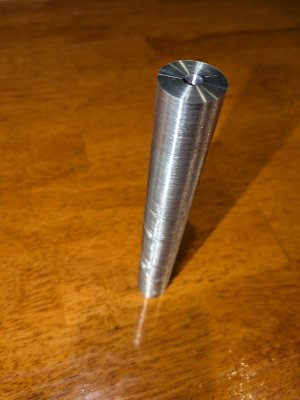- Joined
- Nov 6, 2012
- Messages
- 128
My LMS 7x12 mini lathe kit has a dead center, a live center, lathe dogs of various sizes and drive pins that mount on the spindle plate. I’ve faced and center drilled both ends of an ~8” long 1” diameter 6061 Aluminum round stock section. All for learning’s sake.
Do I understand correctly that, while I can turn a true diameter with this setup, I’ll need to cut off the clamped part of my workpiece and reface and drill to make a straight and true shaft? That seems obvious, but just wanna check for any advice - I can use it!
Do I understand correctly that, while I can turn a true diameter with this setup, I’ll need to cut off the clamped part of my workpiece and reface and drill to make a straight and true shaft? That seems obvious, but just wanna check for any advice - I can use it!


